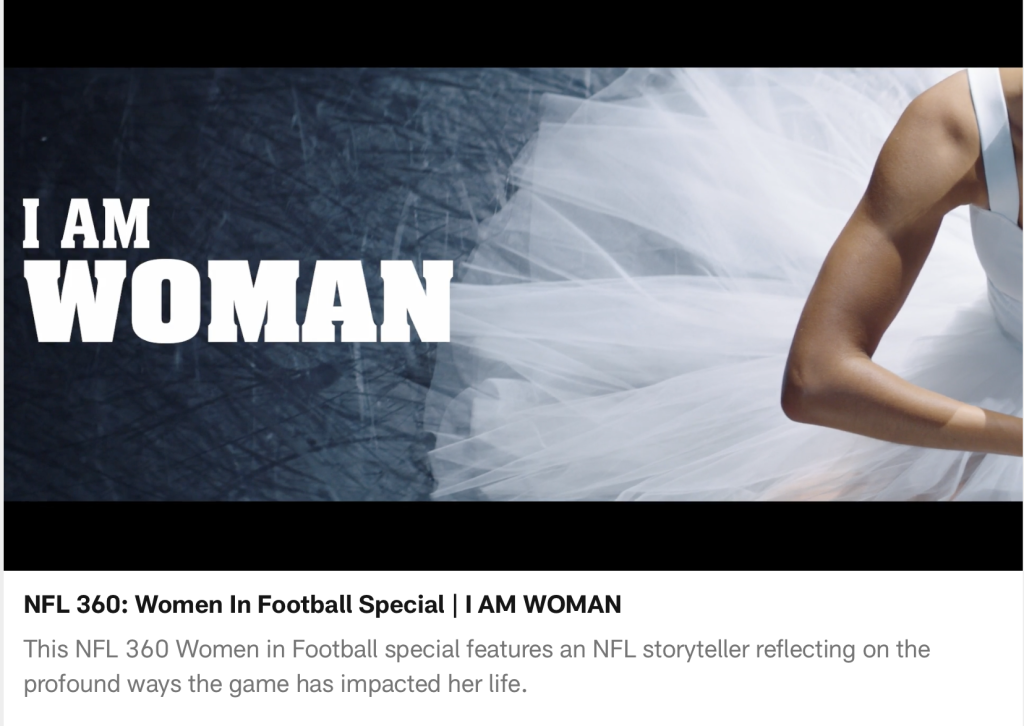The advancement of Name, Image, and Likeness for college athletes has amplified issues surrounding the sexualization of female athletes. While college athletes are now empowered to monetize their likeness, female athletes continue to face forms of objectification through ads that target the male gaze. Consequently, many female athletes struggle with confidence, performance anxiety, and pressures to meet beauty standards. Female athletes want to be taken seriously, but big cooperation’s continue to sexualize women, leaving no room for a display of talent.

NIL a legal policy that allows all NCAA student athletes to be compensated from their name, image, and likeness. As of July 1, 2021, collegiate athletes have the right to work with companies and sell their own merchandise to monetize their brand, just like professional athletes have done in the past (“What Is NIL? NCAA Rules Explained” 1). Since its inception, NIL has become a lucrative business.

At USC alone, athletes like quarterback Caleb Williams and point guard Boogie Ellis have benefitted finically from their advertisements with brands like Alo Yoga and Athletic Brewing. NIL has been a game changer for athletes as they are no longer prohibited by the NCAA to profit off themselves. Athletes can now gain the type of financial compensation that can support the needs of themselves and their families. NIL can also lead to post-college careers as athletes are empowered to create a brand for themselves.
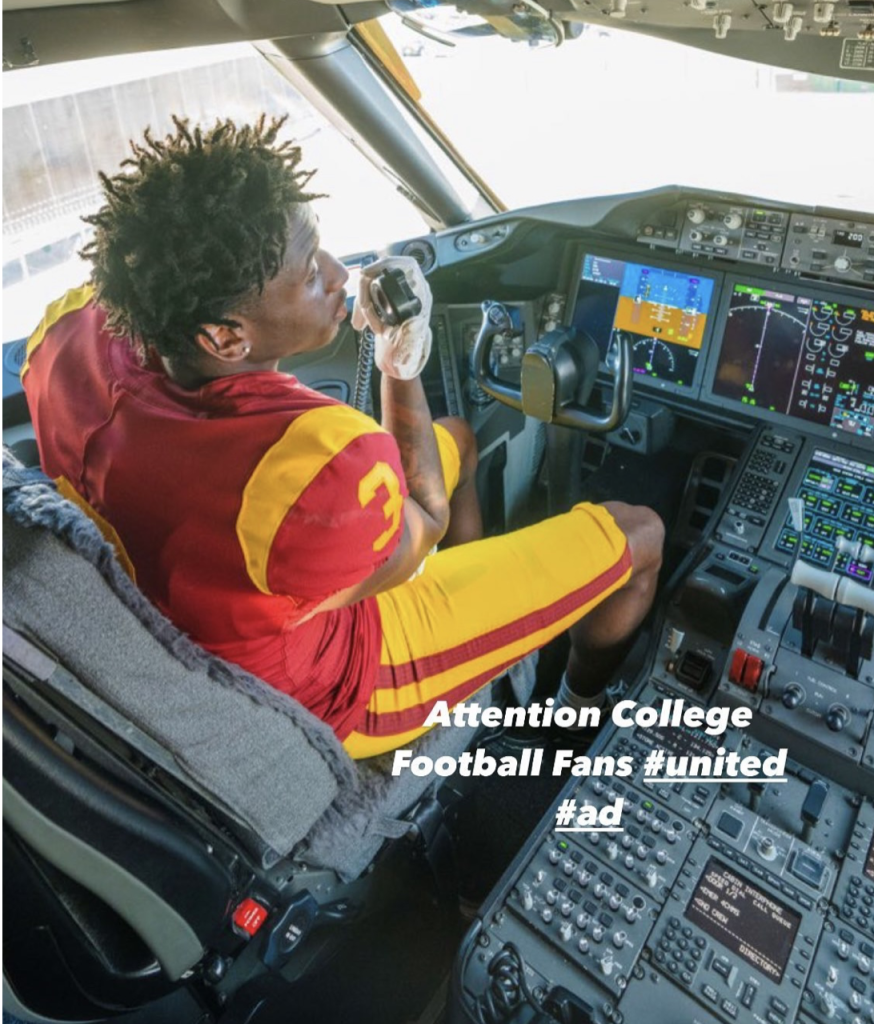

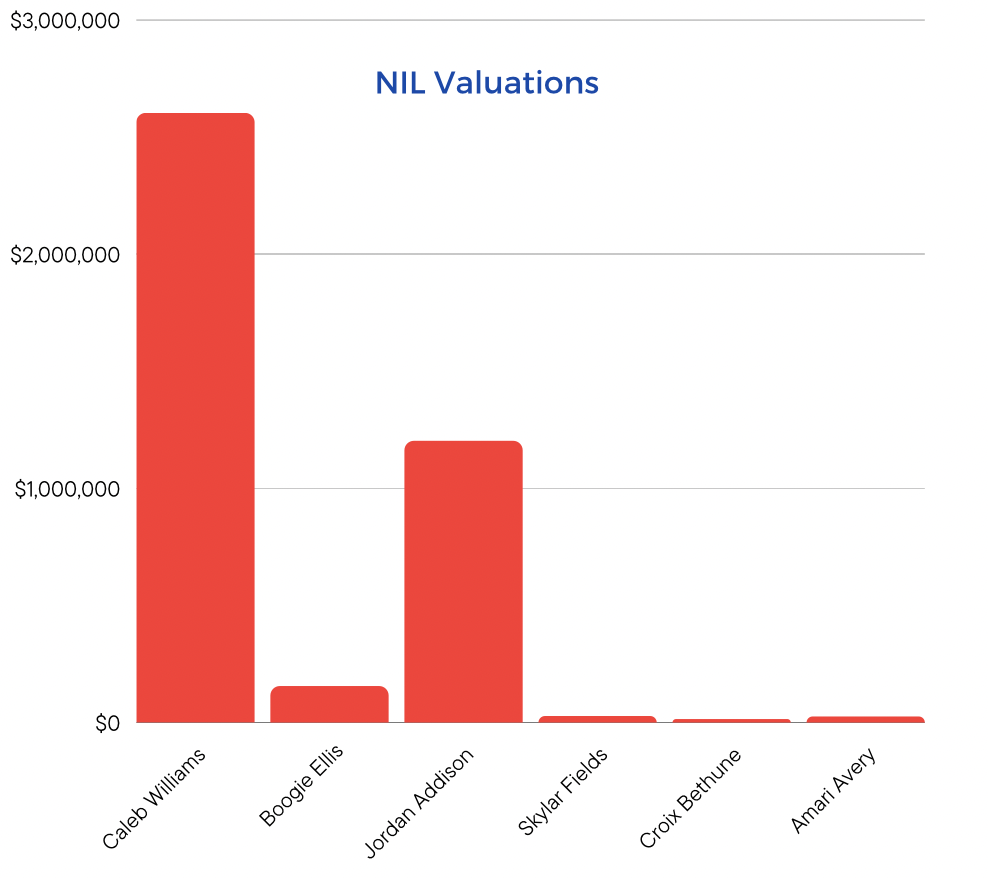
The use of female athletes as a tool for marketing and advertising is not a new phenomenon. However, the sexualization of these women in this capacity is a tale as old as time. Unlike their male counterparts, women are often judged more for their looks, social media followings, and bodies versus their talent. This remains true not only in advertisements, but also in the ways that these women are objectified through sexual harassment. This type of judgement reduces female athletes to nothing more than their outer image.

Historically, women have been sexualized, abused, and objectified through sports. Dating back to 6th century BC, women were not allowed to participate in the Olympic Games. In fact, they would be murdered if found even attending the Olympic Games. Instead, they were encouraged to complete in the Heraean games which were focused more on the outer appearances of women versus their athletic talents (Bagri 2).
In the early 20th century, women were often encouraged to stay away from sports and focus more on ideas of homemaking, motherhood, and sexuality. Sports were associated with masculinity, and women with a competitive drive were typically seen as unladylike (Reich 1).
In the 1970s, strides were made through the breakthrough civil rights law, Title IX. The law, which is still in effect today, prohibits sex-based discrimination in educational programs, including sports. Title IX has created and increased opportunities for female athletes. However, even with the induction of Title IX, professional female athletes were still being institutionally sexualized. An example of this is when the Montreal Olympics of 1976 created the “Poster Girl” campaign that advertised women in a certain light, reducing them to their beauty.

Today, the fight isn’t over. Whether it’s the tragic sexual abuse that Olympian gymnasts endured or the lasting stigmatism surrounding female athletes who do not fit a certain prototype, history has found a way to repeat itself besides societal developments.
Media coverage of female athletes has historically been incredibly misogynistic. Even in today’s progressive world, female athletes are portrayed in certain ways. One example of a female athlete who was adored by the media for her sensuality and poise was Anna Kournikova. The Russian tennis player gained media attention for her tight body and long blonde hair. She never won a single title in tennis, but she remained one of the most popular female athletes in the world because of her modeling gigs.
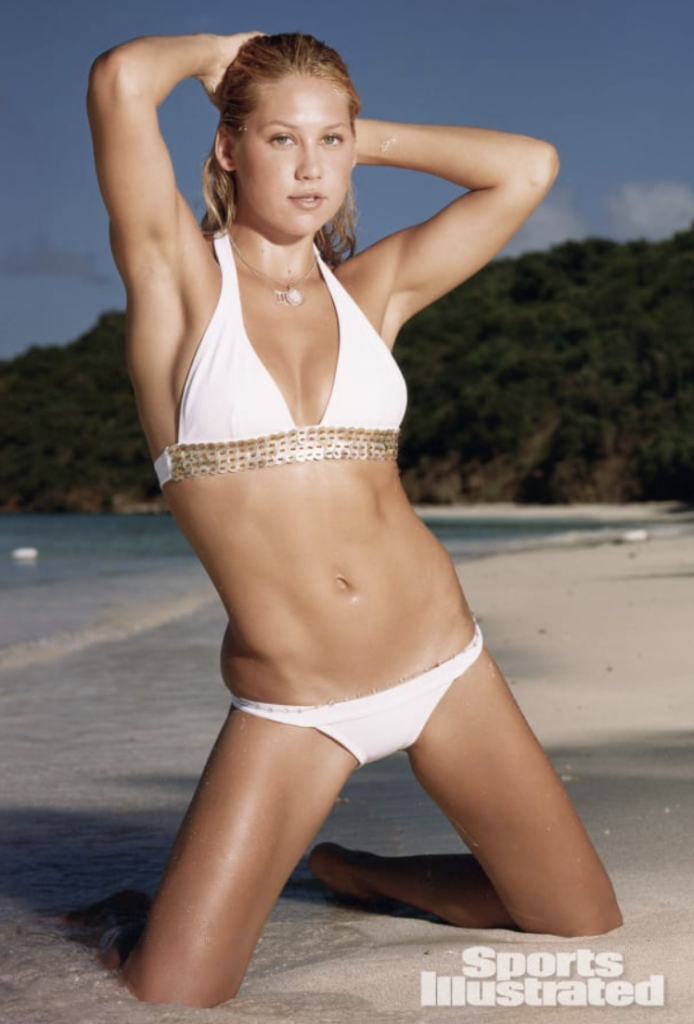
On the other hand, Serena Williams, who has won 23 grand slams, has been dragged by the media. She has faced racist and sexist comments and criticism on her body.
“You may shoot me with your words… you may try to kill me with your hatefulness, but still like air, I rise.”
Serena Williams responding to racist comments
Instead of seeing Serena for her talent, the media spent focused on her outer appearance.
Now on social media, we see many women in sports being sexualized. Female athletes are often objectified, stereotyped, and criticized for their personal lives or athletic performances by people behind screens.
Uniforms also play a role in the sexualization of female athletes. Some uniforms are revealing, tight, or small. Because of this, some women in sports have a target on their backs. The factor of uniforms can enable people to sexualize female athletes by minimizing their talent and objectifying their bodies.
This sort of sexualization of female athletes has unwavering impacts on players and how they are portrayed. Because of the significance of physical looks, many female athletes struggle with body confidence, psychological distress, self-deprecation, performance anxiety, and even a loss of love for the sport that they play. Because of the high beauty standards for women, some athletic achievements are overshadowed by looks. This form of gender discrimination perpetuates stereotypes that women should be reduced to their beauty only.
“Something as simple as a uniform kind of sexualizes and objectifies a woman in sports. It’s kind of a target to get cat-called.”
Bailey Lear, USC Track and Field
In terms of NIL, female athletes have a great opportunity to benefit. One way that NIL endorsements can positively impact female athletes is by increasing their public visibility and take control over their personal brands. Now, collegiate athletes can utilize tools like social media, brand gigs, and marking deals to advance their athletic careers. Because of NIL, college athletes can also benefit finically. The income from deals can provide female players the opportunity to bridge the gap between gender-based pay disparities. It also allows for female athletes to have agency over their own personal brands and choose the way that they desire to be portrayed.
While there are many possibilities for positive impacts on women in sprots, NIL also poses some potential risks for the group.
One risk that women face with the introduction to NIL is the increased pressure to be sexualized. NIL allows for younger women to be walking advertisements for brands, and sex still sells.
Looking sexy can attract the attention of sponsors, therefore some athletes may feel obligated to post reveling photos of themselves on social media or agree to participate in sexualized marking campaigns. Another risk that NIL has the power to reinforce the idea that female athletes are commodities for marketing and first, and athletes second. This opens that door for women to be continually sexualized by industries and by sports fans and viewers. NIL also has proven to create a larger gap between opportunities that men receive versus women. While some female athletes, like Livvy Dunne, are winning big from NIL, most are being overshadowed by their male peers. NIL is supposed to provide equal opportunities for all college athletes, but gender biases have still seemed to reinforce unequal opportunities for women in sports. Female athletes may also face struggles when trying to negotiate deals and protect their rights so they are not exploited.

NIL should be something that female athletes can use to benefit themselves. But to ensure that women do not have to feel sexualized while partaking in NIL endorsements, there are a few strategies that can be considered.
One of the best ways to prevent the sexualization of college women in sports is to provide them with the proper education and awareness they need. By teaching student athletes about the potential negative impacts of NIL on the sexualization of females in sports, women will feel empowered to make well rounded decisions related to endorsement deals.
Education surrounding the subject could promote values of self-respect and independence. Coaches, athletes, and media professionals should all be made aware of the negative implications of sexualizing women in sports.
“We need to make sure that we are educating our women student athletes about the pitfalls that come with this”
-Dr. Julie Rousseau, USC Athletics DEI Director
Another way to minimize the negative effects of NIL is to encourage media and companies to increase prestation of women in sports on their own terms. Creating spaces for female athletes to be themselves in advertisements can help work against the inherent objectification and stereotyping that has been conformed to in the past. When female athletes feel empowered to control their own brand identity, they are able to avoid exploitation by companies and fans.
However, it’s critical that athletes negotiate with brands to focus on promoting their athletic talents instead of their appearance. Additionally, there should be an effort to regulate and have NIL endorsements. While NIL deals are a decision for an athlete to make, there should be specific guidelines, rules, and codes that companies must follow when sponsoring athletes.
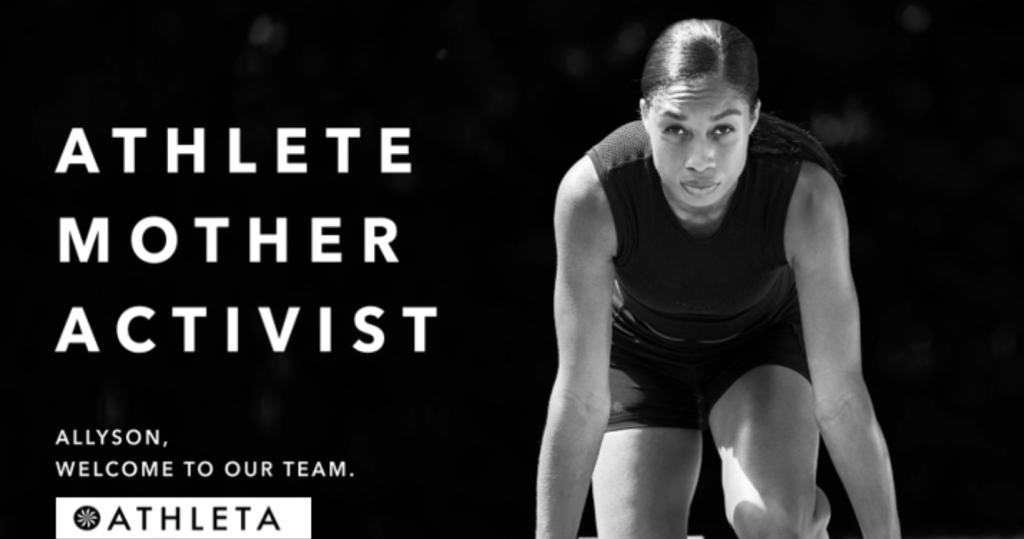
By doing this, it can be ensured that women are not being subjected to objectification or sexualization in brand deals. Addressing the issue of the sexualization of women in sports is no easy feat. There is no single-step operation that can break the historically relevant gender biases in sporting. However, a multifaceted approach could promote necessary social and systematic changes so that women can be recognized as skilled athletes.
Women being sexualized in sports is no new challenge. For years, strong women have worked to prove their worth for the sake of equality. When it comes to NIL, there is a great opportunity to work towards more accurate representations of female athletes. But again, we know that the current state of NIL for women carries many risks. If changes are made to provide women with more accurate representation through NIL, exploitation could be lessened.
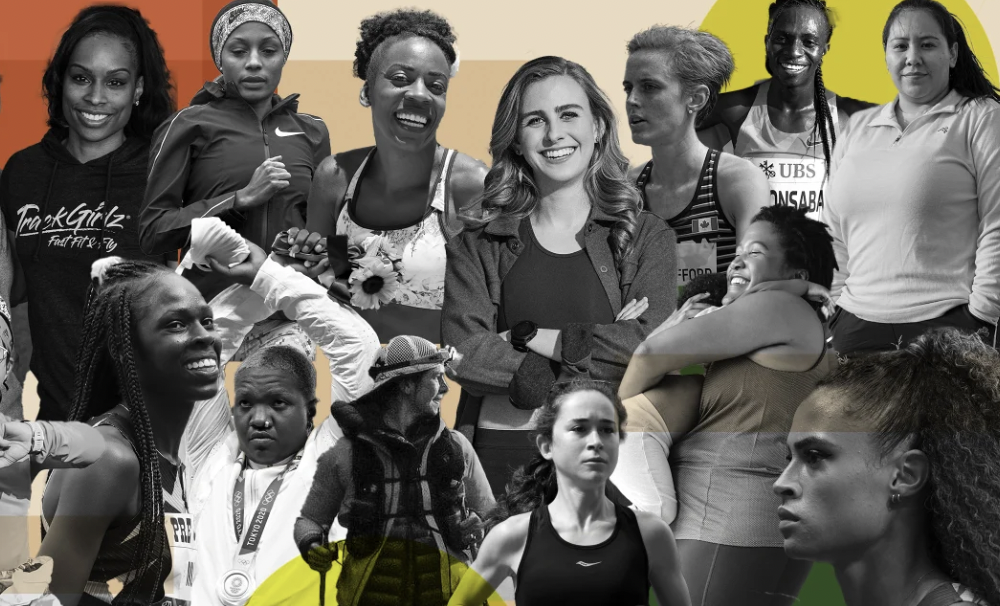
It is important to continue efforts that empower females and work towards gender equality in sports. Change can only be made of athletes, coaches, fans, media, the companies working with athletes take the opportunity to educate themselves on the issue. By working as one unit, there can be a future where female athletes gain the type of representation they deserve.
